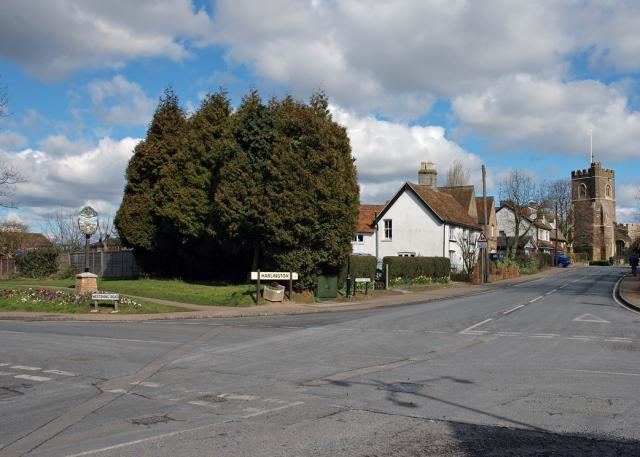OS grid reference TL035305 Unitary authority | Civil parish Harlington Local time Thursday 9:51 PM Post town Dunstable | |
 | ||
Population 2,260 (2004)2,297 (2011 Census) Weather 7°C, Wind W at 13 km/h, 89% Humidity | ||
Harlington is a village and civil parish located in Bedfordshire, England, near the M1 motorway. The nearest town is Flitwick about three miles to the north.
Contents
Map of Harlington, UK
Road
The village is about 1.5 miles from junction 12 of the M1, 7 miles (11 km) north of Luton, 10 miles (16 km) south of Bedford and 40 miles NNW of London.
Rail
Harlington has a railway station in the west of the village. It was built by the Midland Railway in 1868 on its extension to St. Pancras. The original intention had been to call it "Harlington for Toddington". The station is served by Thameslink route trains. From Harlington station, you can travel north to Flitwick and Bedford, or south to Luton, Luton Airport Parkway, Harpenden, St Albans, Central London, East Croydon, Gatwick Airport and Brighton.
Buses
The X42 service provides a direct link to Toddington, Westoning, Flitwick, Ampthill, Houghton Conquest, Kempston, and Bedford.
Air
The nearest airport is at Luton, about 8 miles to the South.
Amenities
Harlington has two public houses, the Carpenters Arms and The Old Sun. There are several churches, including the Church of St Mary the Virgin, Harlington Methodist Church and Life Church (part of the Pioneer network of churches). There is a small parade of shops consisting of a general store with post office counter, a hairdresser, a cafe and a gunsmiths. Other businesses include an estate agent in Church Road.
There are several buildings surrounding the village green used for community activities. These include the parish hall, village hall and scout hut. A cricket pitch adjoins the village green.
Schools
The village is home to Harlington Lower and Upper Schools which serve students up to A-level. Many students from the surrounding Luton and Bedfordshire area travel to Harlington for its schools. Harlington Upper School recently became a specialist science college, thanks to funding raised by its Parent-Teacher Association, HUSA.
The village also has Harlington Lower School, which has an age range from reception class through to age 9 and received a "Outstanding" rating in its 2010 OFSTED report. As Bedfordshire is a three tier schools system, most children in the middle age bracket spend their middle years at Parkfields in nearby Toddington.
Also on the Lower School site is Harlington Village Pre-School, a volunteer run charity accepting children from the ages of two years and nine months.
